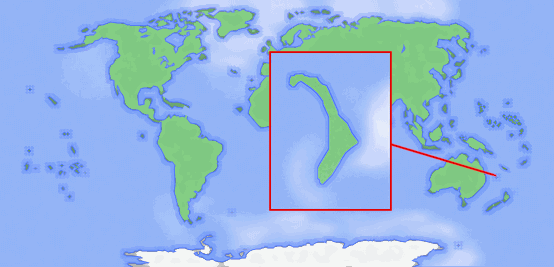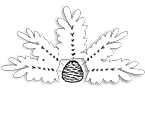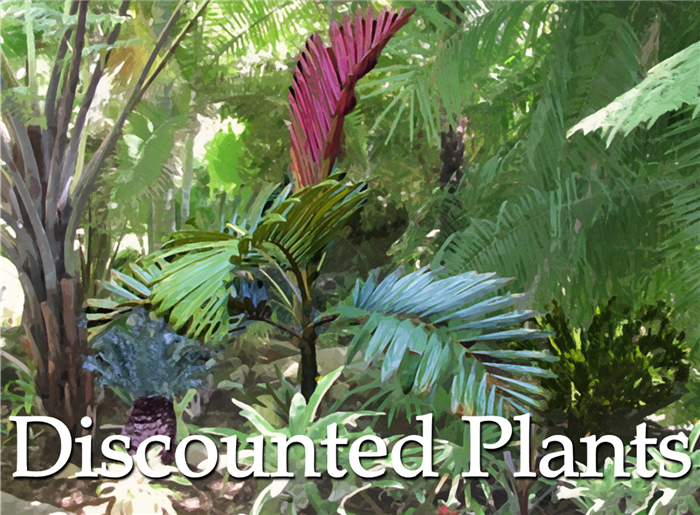By Phil Bergman
Below is a brief primer on the palms of Lord Howe Island. These plants are quite interesting because they all grow quite well in coast Southern California. Comments about culture apply to Southern California weather conditions.


Howea forsteriana, Kentia palm
(Click here for additional info.)
It is best to harvest the seeds of Howea forsteriana when they are ripe and showing a brown-red color. The seeds germinate slowly but easily outdoors in San Diego. I recommend germinating them on the garden surface in a shady area under a one inch layer of mulch. Water the seeds as you would normally water your garden. They will germinate in about one year. Greenhouse germination results in lower germination rate and risk of the seeds rotting. Growth rate of Howeas is slow. It takes two to three years to get a good one gallon and five to seven years to get a fifteen gallon plant. Plants grow more quickly as singles than as multiple plant groupings. Along the coast Howea forsteriana can tolerate full sun but look their nicest in filtered light. Transplanting small garden specimens is quite easy. Transplanting larger specimens is possible with an adequate root ball, but an extremely tall trunked specimen (i.e. more than twenty feet of woody trunk) carries some risk of dying from transplantation. Howea forsteriana will tolerate temperatures as low as 25 degrees F, but such temperatures will result in some leaf burn.. Adult plants will fruit at approximately fifteen years of age. Incidentally, I have seen Howea variants that throw slightly red new leaves. This red color can also be evident somewhat in the petiole. The leaning disease of Howea forsteriana is characterized by a downward leaning of the crown, ultimately with the crown and leaves pointing almost toward the ground. If left untreated, it is usually fatal. It is best treated with cutting back almost all the foliage and watering heavily while simultaneously treating the crown with broad spectrum fungicides.
Howea belmoreana
Germination and culture is similar to H. forsteriana, but growth is slower with this species. Identification of smaller plants is most easily appreciated because the leaves carry a greater number of leaflets. When larger, the traditional downward curving of the leaves is also apparent. As with H. forsteriana, the plants look best in filtered light. However, deep shade results in poor growth for both species. As with Howea forsteriana, large specimens of H. belmoreana can be transplanted with care. All Howeas make nice house plants with fairly easy culture. It is quite surprising how big a plant one can grow in a small container.
Hedyscepe canteburyana
Germination can be done in the greenhouse although bottom heat is not necessary. Young seedlings are susceptible to fungal problems and rot. Growth is slow. It takes about seven years to produce a nice 15 gallon specimen. Plants like good drainage. They prefer moderate filtered light or morning sun. Hot dry conditions (Santa Ana condition in Southern California) will burn the leaves. They do extremely well in the coastal strip where one has mild summers and winters. Cold tolerance is comparable to Howeas. Well grown specimens have a beautiful silver color to the trunk and will carry a full head of leaves. Because of their beauty, they are very sought after. Plants with about ten feet of trunk will fruit and seed. Transplantation data is very limited, but it is known that Hedyscepe can be moved successfully.
Lepidorrhachis mooreana
Fresh seed will increase rates of germination. Ive used bottom heat although I doubt it is necessary. Young seedlings are somewhat weak and very susceptible to fungal infections. Outdoor culture in frost free areas is as successful as greenhouse culture. Growth rate is very slow. Lepidorrhachis do not like extremely hot greenhouses. Remembering that mature specimens are about head height, one realizes why it takes four to five years to get a nice one gallon plant. This species does best in mild climates, not liking extreme heat. They will tolerate some cold and a light freeze. They like filtered light but will tolerate full sun along the coast. Care must be used when repotting. Try not to damage the roots. When planting small Lepidorrhachis in the garden, it might be wise to plant the pot and all into the ground, thus causing less disturbance to the roots. A mature specimen in the garden will take twenty years. There appears to be no reason why Lepidorrhachis wont fruit in Southern California although I am unaware of successful fruit being produced here. If you are lucky enough to have this species, take good care of it because it is indeed rare.
The upright Howea
Palm enthusiasts in Southern California remember an unusual plant distributed in the early 1980s in the San Diego area by Rudy Lasaga, a veteran IPS member and nurseryman. Rudy had obtained seedlings directly from Lord Howe Island. At the time Rudy felt that they might be Lepidorrhachis. This they were not. However, they were not anything usual. They looked like a very upright Howea with all the leaves jammed together as if someone had tied them together with string. They also preferred full sun. Although not a thing of beauty, they were indeed different. To this date no one is sure exactly what these plants are. There are mature specimens in gardens presently. Conjecture would lead one to think they were some type of hybrid. They are not what one would anticipate morphologically from a H. forsteriana x H. belmoreana. As Rudy got them from Lord Howe Island, could there be an undescribed inter-generic hybrid?
(End)
- PALM TREES, CYCADS & TROPICAL PLANT BLOG - October 1, 2020
- TRACHYCARPUS
The Windmill Palm - September 30, 2020 - FAN PALMS –
PALMS WITH CIRCULAR LEAVES - September 29, 2020















